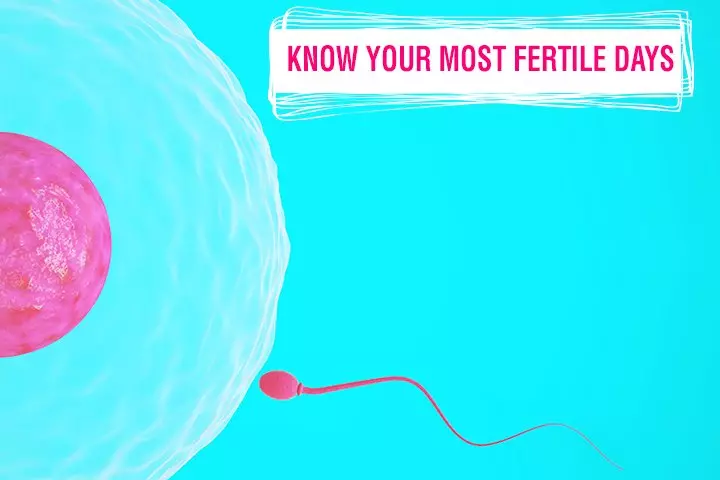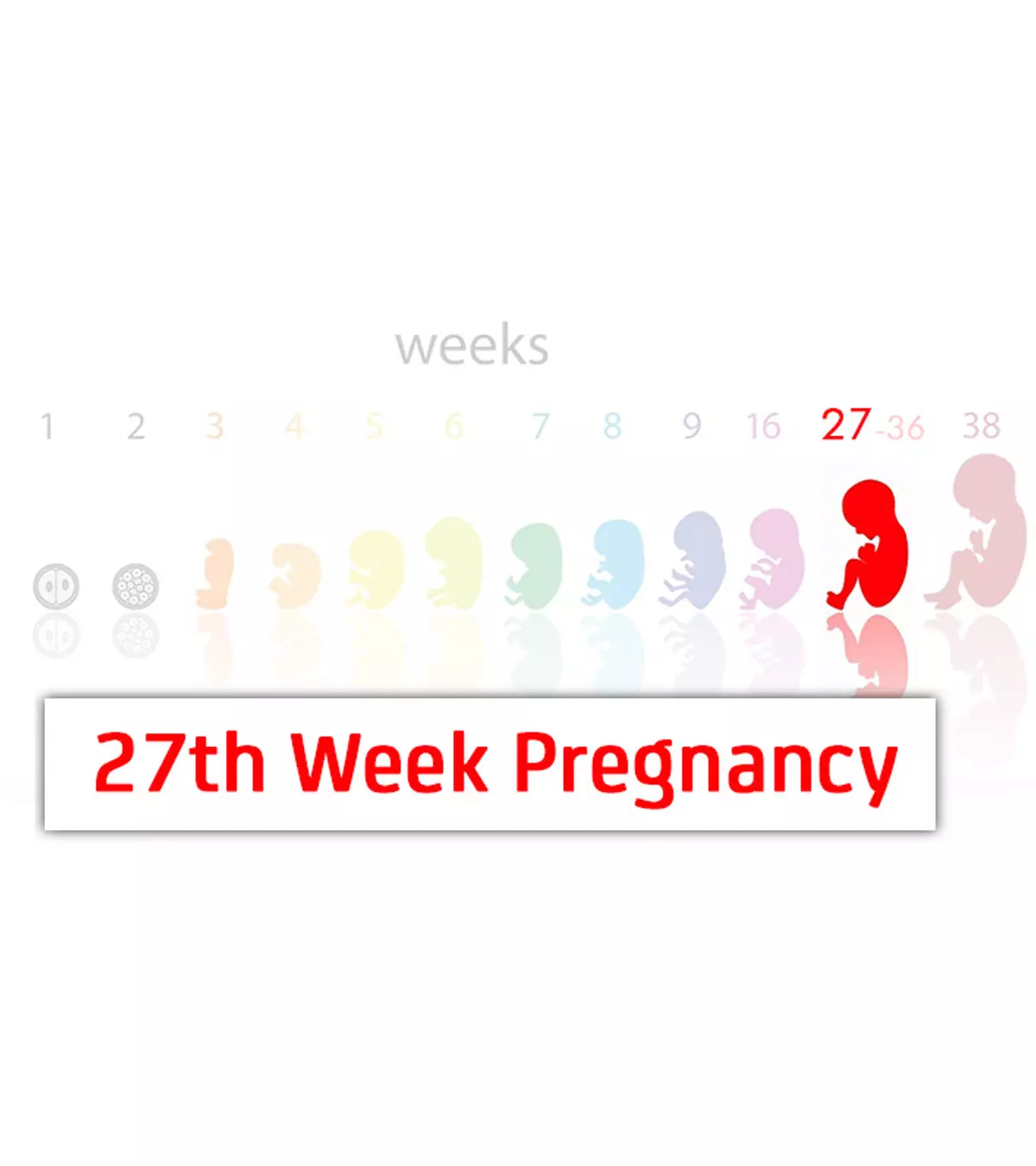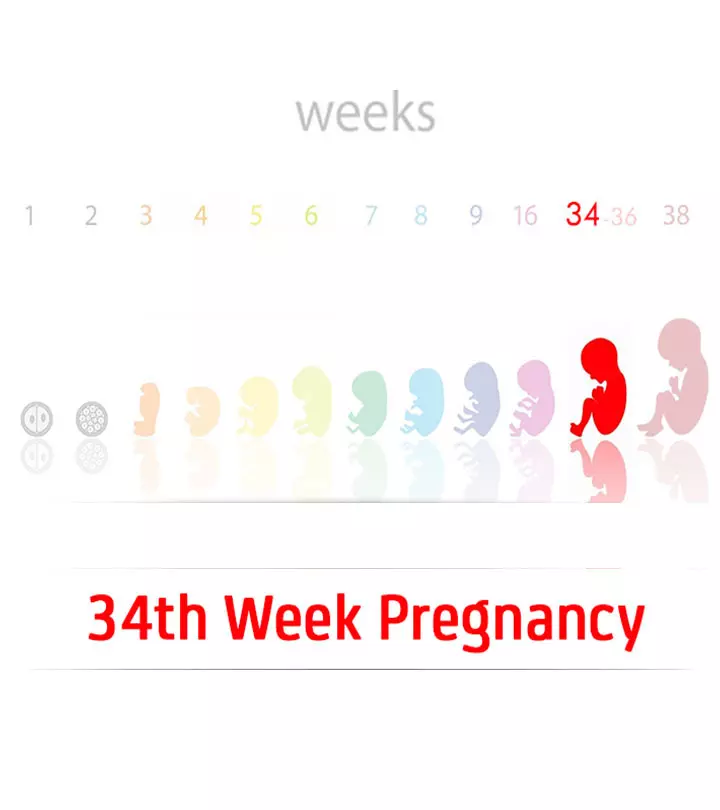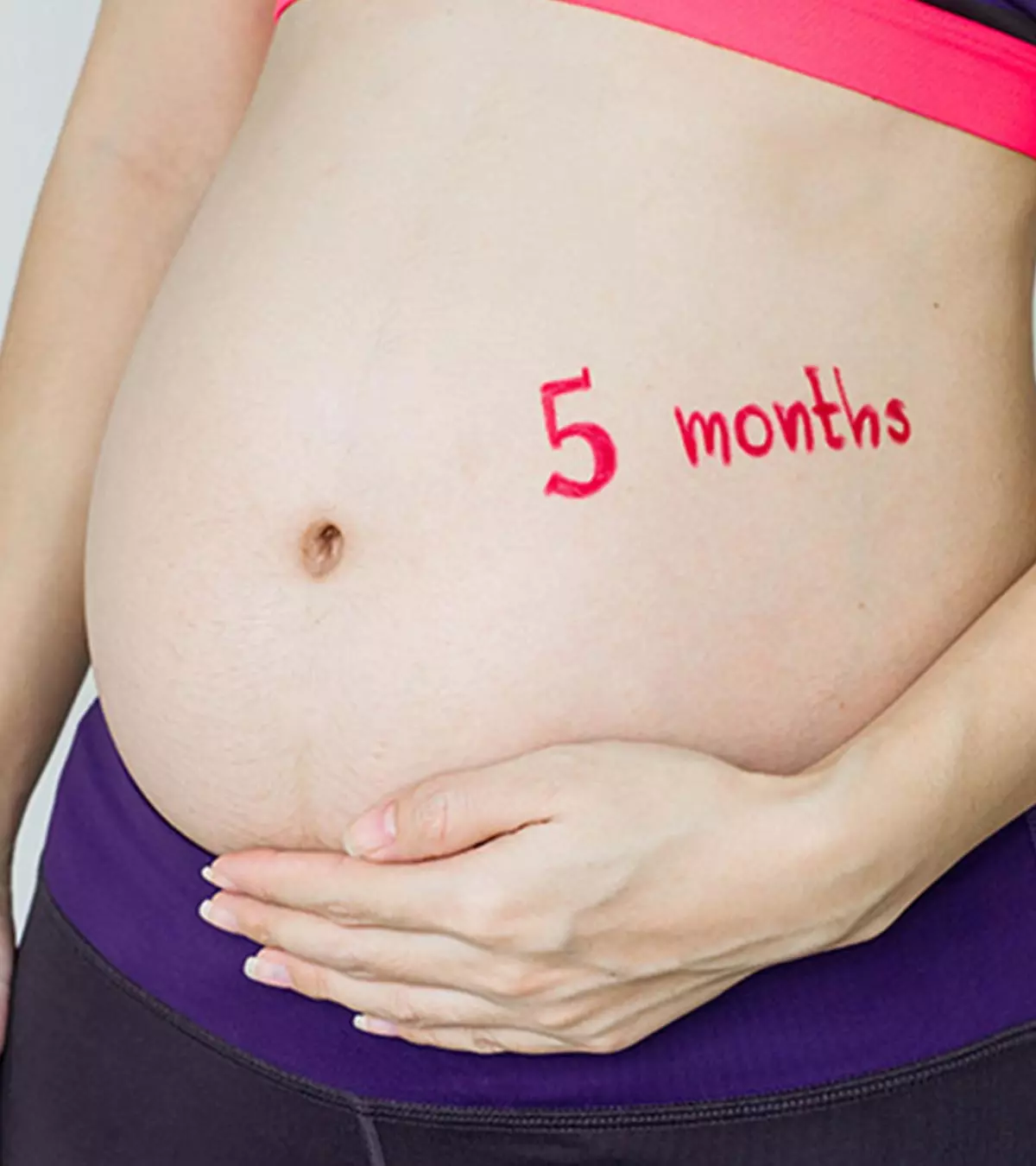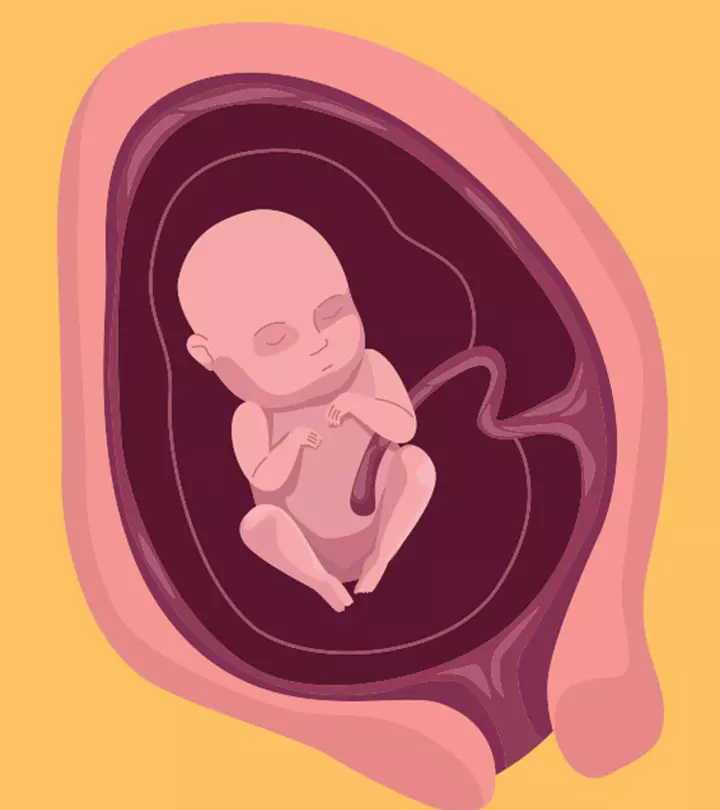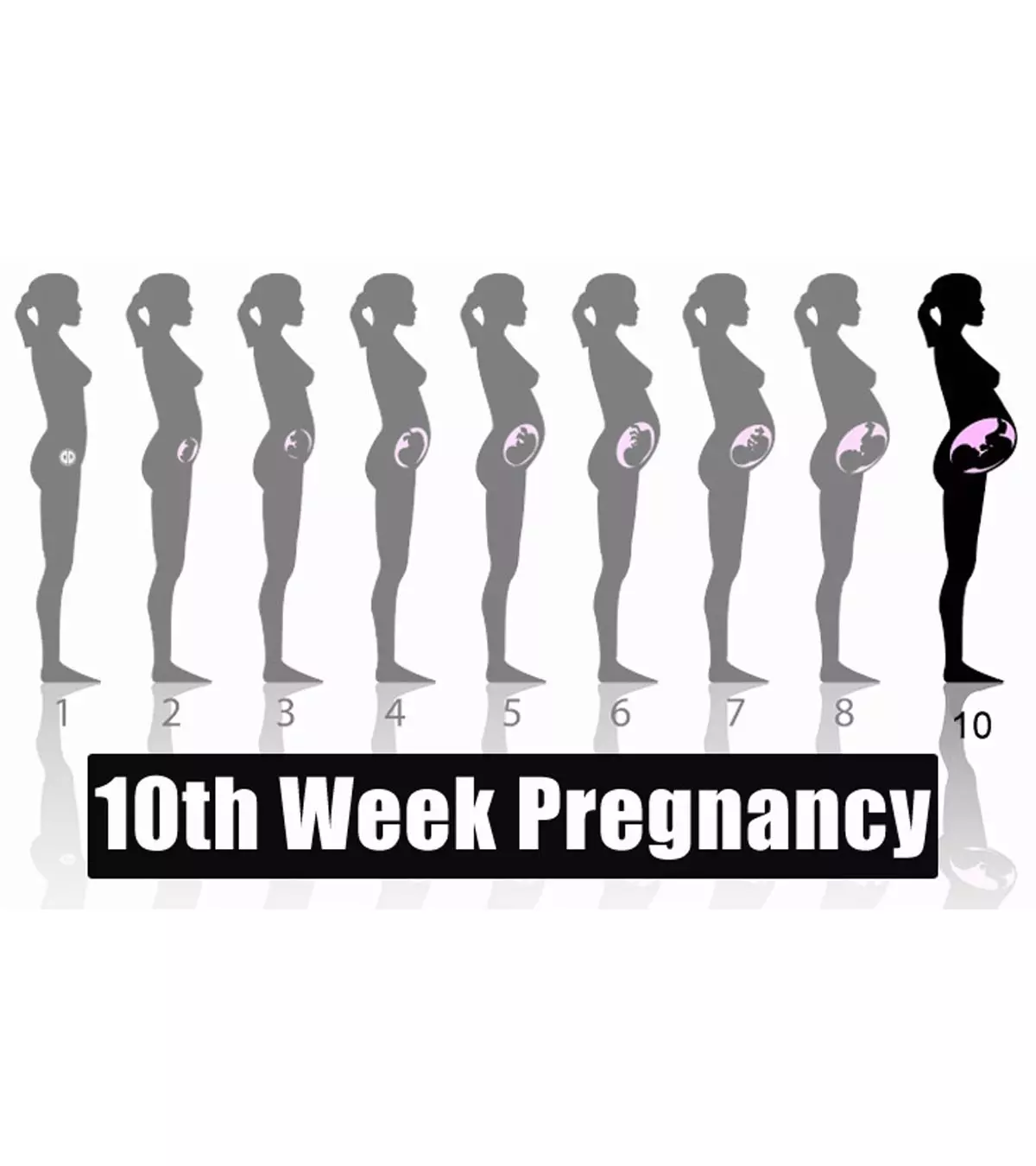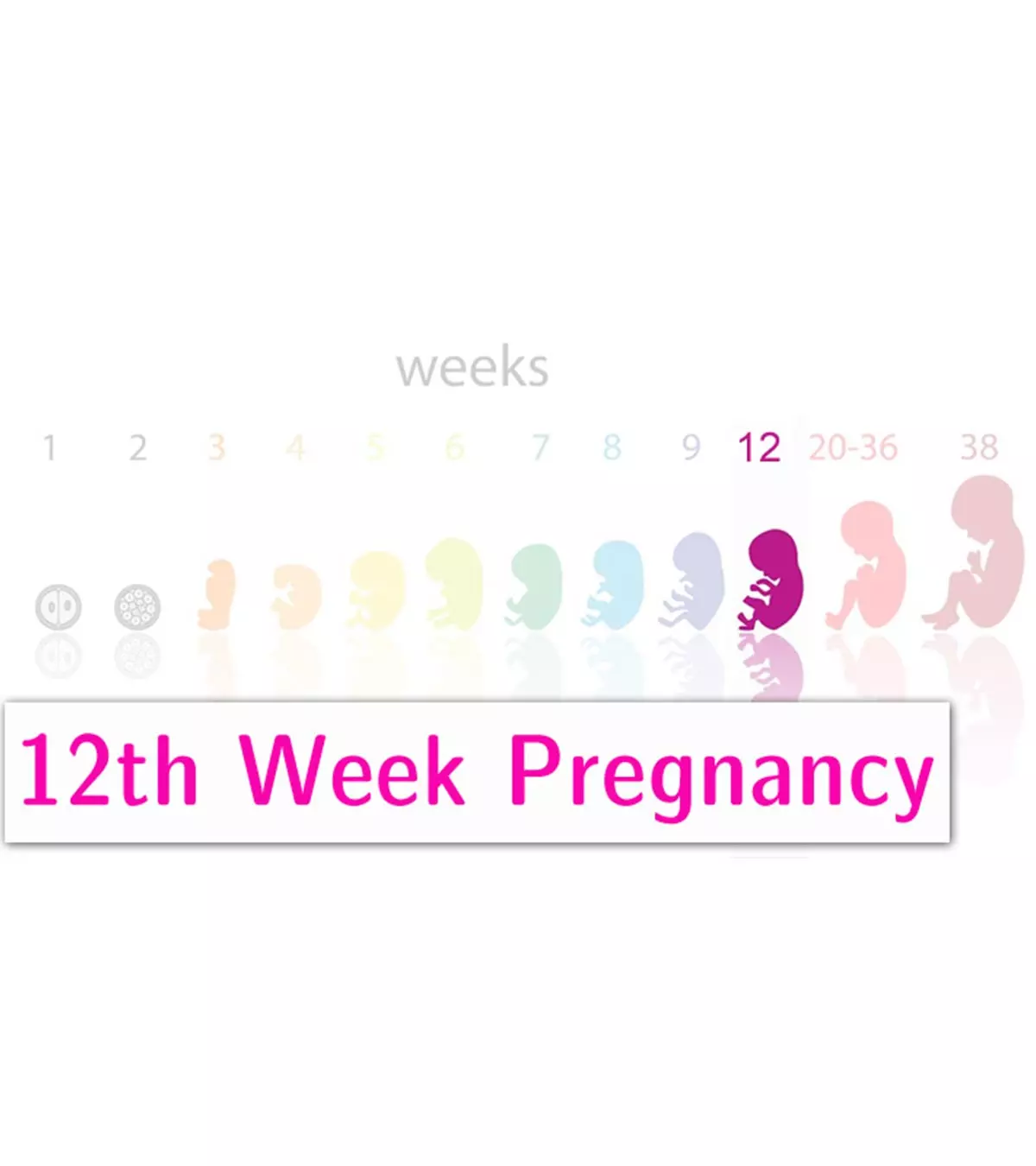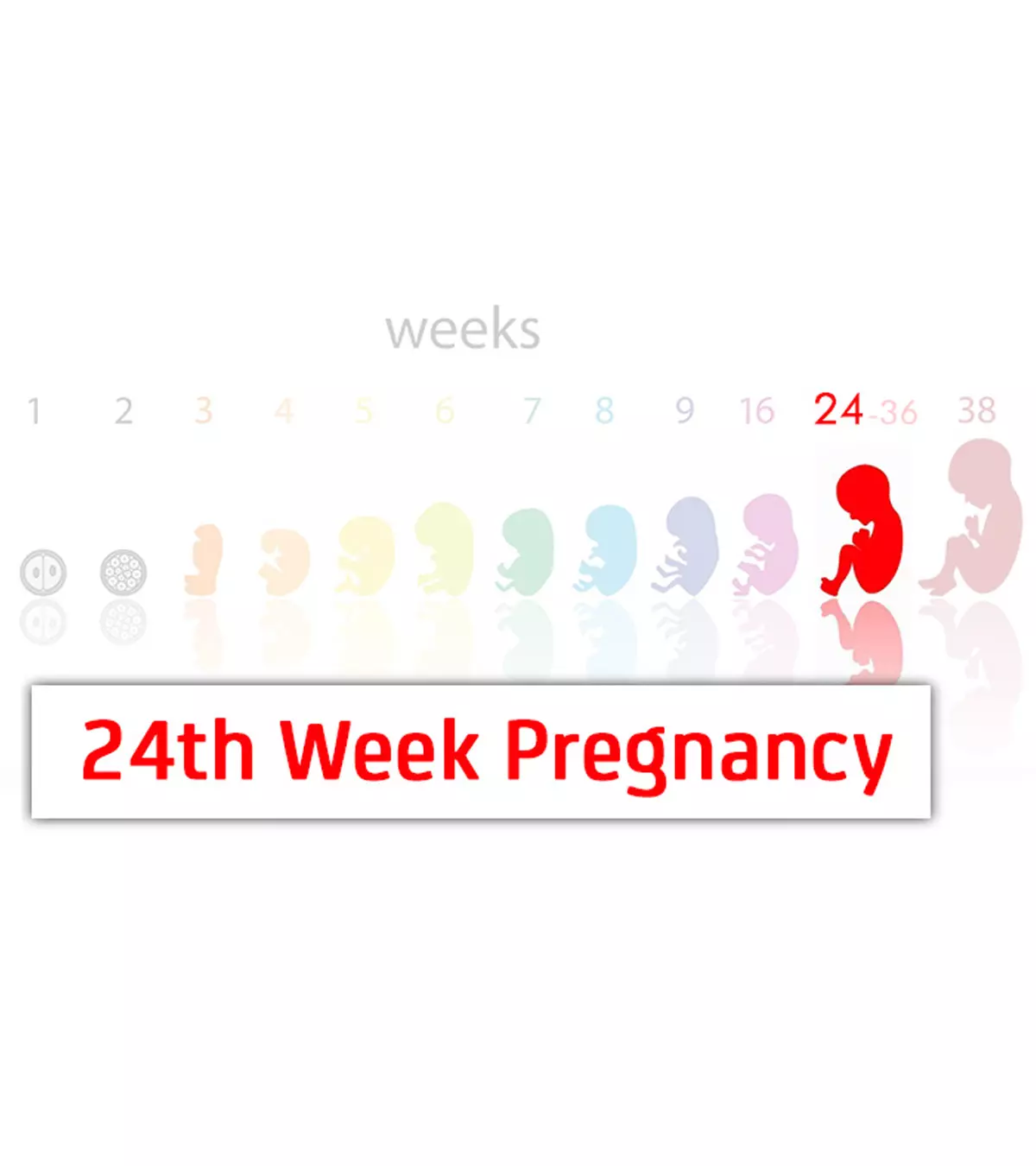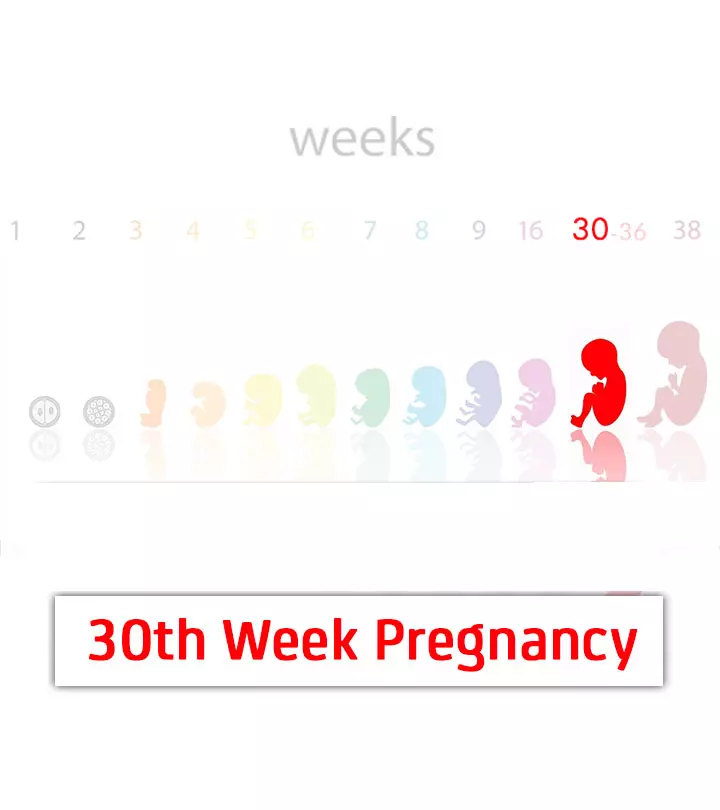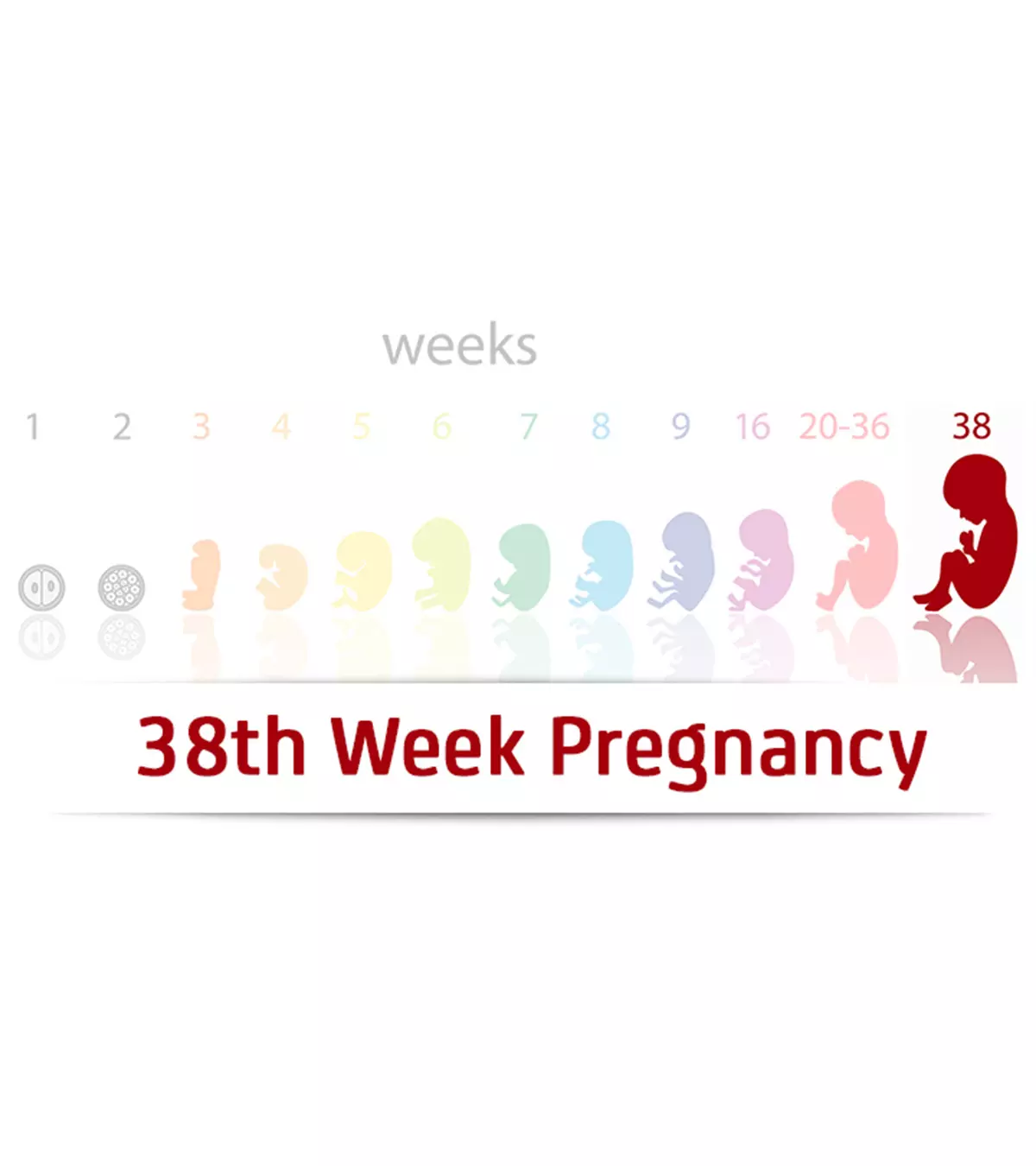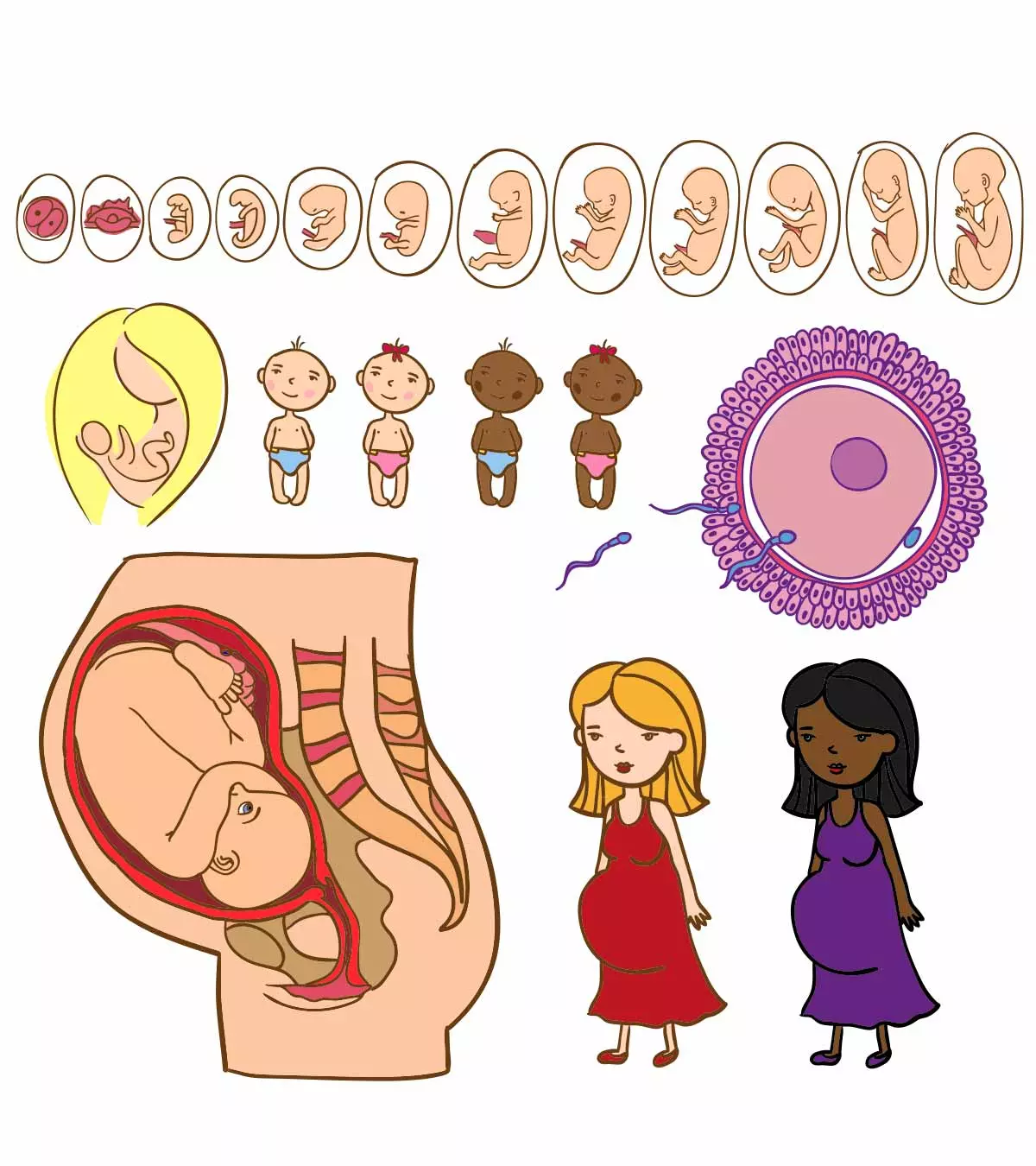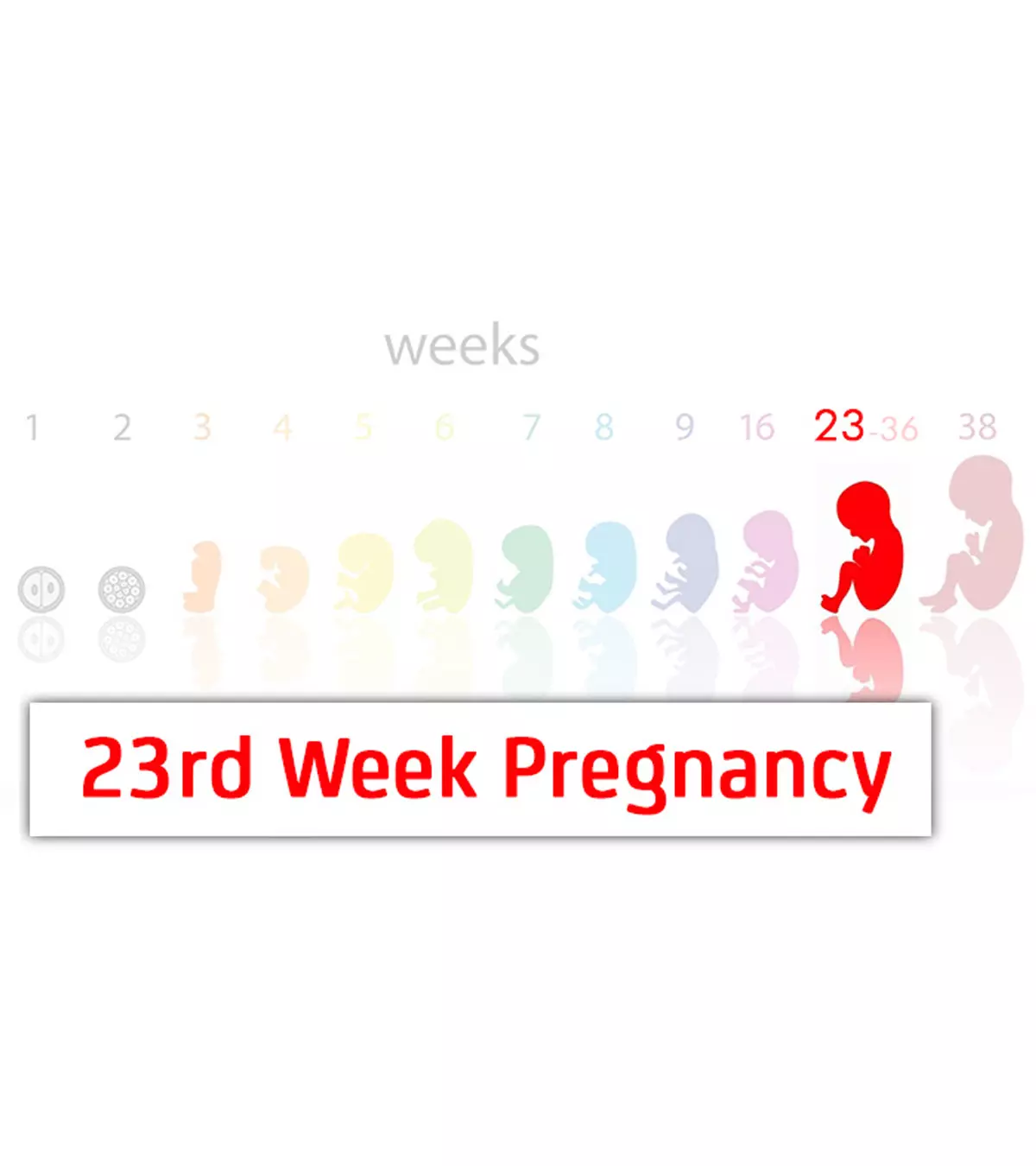
Image: ShutterStock

Key Pointers
- Pregnancy is typically measured from the first day of the last menstrual cycle.
- A typical pregnancy lasts for 40 weeks, with the first week starting from the first day of the last menstrual cycle.
- Pregnancy can also be measured in months, with each trimester lasting approximately three months.
- The due date can be calculated by adding 280 days or 40 weeks to the start of the last menstrual period.
How To Calculate Pregnancy Weeks And Months Accurately?
If you have conceived recently and are pondering how to calculate your due date, you may need a pregnancy week calculator.
You may be already doing the calculations to figure out the due date. By using different calculation methods, you may end up with different dates. However, doctors have standard methods of calculating these dates. Moreover, the due date is determined differently for women who have irregular periods or have conceived through in vitro fertilization. This post will tell you in detail about how to calculate pregnancy months and weeks.
How Is Pregnancy Due Date Calculated?

Your pregnancy due date is calculated by adding 40 weeks (i.e., 280 days) to the first day of your last menstrual period (LMP) (1). This is done with an assumption that you have a 28-day menstrual cycle. The time between your menstrual period and ovulation is calculated as the first two weeks of pregnancy, as ovulation takes place two weeks after the first day of LMP. If you deliver the baby on the estimated due date, she is 38 weeks old after conception and not 40 (2).
If you miss your first period, you are likely to be four weeks pregnant (including two weeks of time from menstruation to ovulation) (3).
 Did you know?
Did you know?How To Calculate Weeks Of Pregnancy?

Pregnancy is calculated based on your last menstrual period. Week one of your pregnancy will start on the first day of your LMP. Likewise, the following weeks are calculated. This may sound weird, but it helps in giving the exact date for timely medical care. Unless you had an assisted conception and knew when the fertilization took place, the LMP method is the only way to know the closest ovulation and conception dates (5).
The doctors can help you with the exact calculation of weeks and months of pregnancy through other ways.
How Do Doctors Date Pregnancy Weeks?
Doctors and midwives use a standard set of three methods to count pregnancy weeks – based on LMP, using ultrasound, and through physical examination. Though the actual timing of labor and delivery cannot be known, the three-step process helps you predict the likely date of birth.
1. Physical examination:
One can know one’s pregnancy weeks by the size of the uterus. Around 12 weeks, your medical practitioner can feel the uterus (fundus) above the pelvis. After 18 weeks, the distance (in cm) between the fundus and pubic bone will be the same as the number of weeks from the last menstrual period. In about 20 weeks, the fundus is at the umbilicusiA small depression or opening on the belly that sepertaes the abdomen into quadrants. . This gives a rough idea about the pregnancy week. However, this is not always the right way to predict the gestational age due to factors such as twin pregnancy, obesity, uterine tumors, or the fundus being higher or lower (6).
2. Ultrasound method:

In addition to checking fetal heart rate, fetal size and fetal movements, ultrasound can also be used for determining the gestational age of a pregnancy. The most reliable way to determine a baby’s gestational age during the first trimester (up to 13 weeks and 6 days) is through an ultrasound. This method is recommended by the American College of Obstetricians and Gynecologists, the American Institute of Ultrasound in Medicine, and the Society for Maternal–Fetal Medicine (7). Ultrasound measurements of the embryo or fetus provide the most accurate estimate of how far along the pregnancy is. It works even when you are not aware of the LMP or if your periods are irregular. It is based on a series of measurements of the gestational sac and the fetusiAn unborn offspring that develops and grows within the uterus. . A report by the American American College of Obstetricians and Gynecologists states, “A pregnancy without an ultrasound examination that confirms or revises the EDD (Estimated Due Date) before 22 0/7 weeks of gestational age should be considered suboptimally dated (7).”
The sonographer measures the baby from head to toe. This gives the CRL or crown-rump length in pregnancy. It helps the doctor estimate the pregnancy week based on the growth of your baby (8). If there is not much difference between ultrasound measurements and LMP, the doctors may use the LMP to establish the due date. For instance, if your first-trimester ultrasound and LMP estimates fall within the same week, LMP is considered final. If there is a difference of one week or more, the ultrasound estimate is considered (5).
If there is not much difference between ultrasound measurements and LMP, the doctors may use the LMP to establish the due date. For instance, if your first-trimester ultrasound and LMP estimates fall within the same week, LMP is considered final. If there is a difference of one week or more, the ultrasound estimate is considered (3).
Alison, a mother and a blogger, shares her experience with calculating her due date. She recalls, “In my case, when I went for my initial OBGYN appointment, I knew the dates for my last menstrual cycle. My doctor used that information to predict my due date of November 30th.
“James (my son) had many ultrasounds very early on and throughout my pregnancy due to complications. His growth pattern and measurements followed along as predicted for the most part. At the end of June, when I was around 18 weeks, my doctor told me not to expect to deliver on November 30th. They weren’t officially changing my due date yet. They did expect that it would be later in the first week of December before James would arrive, indicating he may be a few days younger gestationally than she originally thought (i).”
 Quick fact
Quick factTry our pregnancy due date calculator to know your due date. It gives you the estimated conception date and estimated due date, along with the weeks of each trimester. It will also show your current pregnancy week, and how many more weeks you have to reach a full-term pregnancy.
PREGNANCY DUE DATE CALCULATOR
Pregnancy Due Date Calculator
When Do You Start Counting Pregnancy Weeks?
You can start counting pregnancy weeks as soon as you calculate your due date based on your LMP. You will be counting your 40 weeks from the first day of LMP. As you near the due date, you may have to start counting your pregnancy by days as – 39 weeks one day, 39 weeks two days, and so on (10).
What If Your LMP Is Not Known Or Periods Are Irregular?
The due date calculation works ideally if your periods are regular, i.e., if they follow a 28-day cycle.
If your periods are irregular or you do not remember your last period, you should wait for your first ultrasound pregnancy scan. Also known as a dating scan, it will provide the number of weeks remaining for your due date (3). Most women can remember the date of their last menstrual period (LMP) quite accurately, regardless of their education level or whether they usually keep track of their cycles, a study states (11). However, when the recall period is three weeks or longer, they tend to overestimate how much time has passed since their LMP. This means that calculating gestational age based on LMP may lead to an overestimation.
If the scan does not give the correct results, your doctor may ask you to wait for some more time. Ideally, the dating scan will be done between six and 13 weeks plus six days (12).
Utilizing a menstrual tracking app can assist you in keeping track of your cycles and offer valuable information to your healthcare provider during your pregnancy.
 Quick fact
Quick factWhat Are The Three Trimesters In Pregnancy?
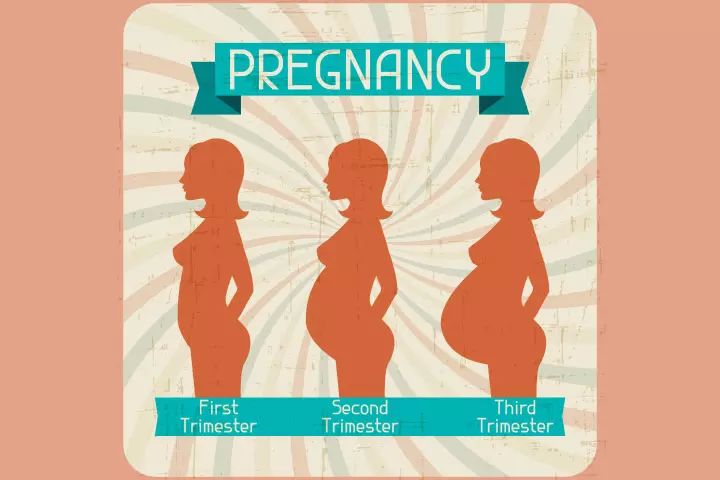
There are three pregnancy stages of three months each and each three-month segment is known as a trimester. The division helps understand the changes in the body.
First trimester: It lasts from week one to week 13, when you experience nausea and tiredness.
Second trimester: It lasts from week 14 to week 28. You will feel much better in this period, and your baby bump will be visible. Early pregnancy symptoms such as morning sickness, headache, dizziness, fatigue, etc., slowly disappear.
Third trimester: It lasts from week 29 until you deliver the baby. You will require extra energy to help your baby grow and beat the tiredness (14).
Does Pregnancy Really Last For Nine Months?
It is based on calculation. Forty weeks adds up to nine calendar months and a week (with 30 or 31 days each) or ten lunar months (with 28 days each) (15).
For instance, if your last period was on January 1, your estimated due date would be October 7 or 8. It equals nine months and one week (and can be longer if you go beyond the due date).
How Do You Calculate Pregnancy Weeks After IVF (In Vitro Fertilization)?
Calculating weeks of pregnancy and the due date is more precise during an IVF than it is during natural conception. This is because the exact date of embryo transfer is known. The inseminationiTransferring sperm into a female plant or animal to fertilize or impregnate. or egg retrieval procedure is scheduled before ovulation in IVF, thus making it more accurate.
The IVF due date is calculated by adding 38 weeks (i.e., 266 days) to the day the eggs were inseminated.
An alternative calculation is by adding 38 weeks to the date of transfer and subtract the age of embryos from this date. For instance, if it is a three-day embryo transfer, subtract three days, and if it is a four-day embryo transfer, subtract four days (16).
It, therefore, gives reliable estimated due dates. Also, with progressing pregnancy, the estimated due date could be more accurate based on ultrasound scans.
Week-To-Month Pregnancy Chart:
If these calculations are making you go nuts, there is a simple breakdown of how the pregnancy weeks, months, and trimesters line up with each other.
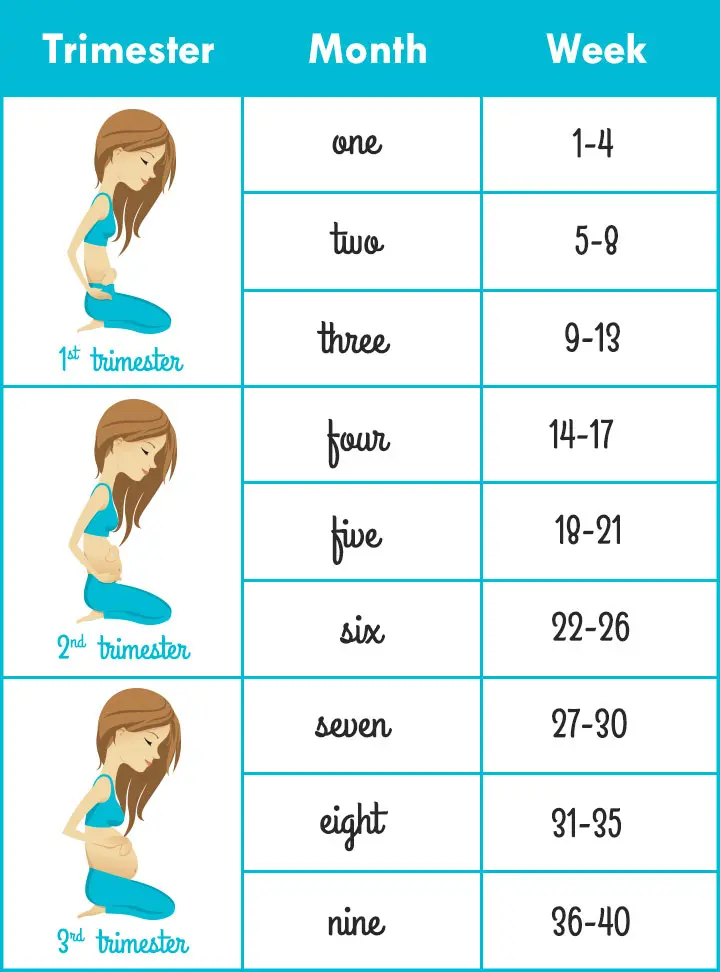
If You Are In Your Fifth Week Of Pregnancy, Why Are You Referred To As Four Weeks Pregnant?
Sarah Owen, author of “The Complete Guide To Pregnancy And Child Care,” helps clear the confusion about pregnancy weeks by relating them to a baby’s age. When a baby is one year old, she completes the first 12 months of her life. Though she enters the second year, she is called one-year-old. Similarly, when you complete the first week of pregnancy, you are known to be one-week pregnant, even though you enter the second week.
A quick look to understand the terms and counting of pregnancy weeks:
- In your first week of pregnancy, you will be referred to as being zero weeks pregnant.
- In your second week of pregnancy, you will be referred to as being one week pregnant.
- In your third week of pregnancy, you will be referred to as being two weeks pregnant.
And so on.
It is for this reason that when you miss your first period, you are four weeks pregnant even though you are in your fifth week of pregnancy (i.e., starting of a new month).
How Accurate Is Your Pregnancy Due Date Calculation?
Due dates are just estimates, which differ from one pregnancy to another. Most babies are not born exactly on their due date. Even when estimated by ultrasound, only about 70% of women give birth within 10 days of their expected date. In fact, just 4% of women deliver exactly at 280 days of pregnancy (15). Most babies arrive in between 37 and 41 weeks of pregnancy.
Frequently Asked Questions
1. Can my due date change?
Yes, it is normal for your due date to change depending on the growth of your baby, which may be detected in the subsequent ultrasounds (4).
2. Why is it important to know my exact pregnancy due date?
Knowing your pregnancy due date is essential to schedule prenatal care check-ups, tests, doctor’s appointments, and monitor fetal development week by week according to your gestational age (7).
3. What is Naegele’s rule for due date calculation?
Naegele’s rule for due date calculation comprises three steps based on the 28-day menstrual period. The steps are (1):
- Determining the first day of the last menstrual cycle
- Counting three calendar months preceding that date
- Adding one year and seven days to that date
4. How can I track my pregnancy progress?
Consider using a pregnancy app or journal to record milestones, appointments, and symptoms. These tools can help you stay organized and monitor your pregnancy journey.
Pregnancy calculator week by week can be a useful tool in birth preparation as it can help you determine the exact gestational age of your pregnancy. This information can then be used to plan a healthy diet, appropriate physical activities, and medical appointments recommended for that specific week. This may also help you plan prenataliPrior to birth. exercises according to the pregnancy age. You may use the pregnancy months calculator from the last menstrual period since it can be closer to the ovulation and fertility window. Those who undergo assisted reproductive procedures or track ovulation may have a more accurate gestational age. You may seek healthcare providers’ help to calculate the due date and age of the pregnancy.
Illustration: How To Calculate Pregnancy Week By Week & Months Accurately?
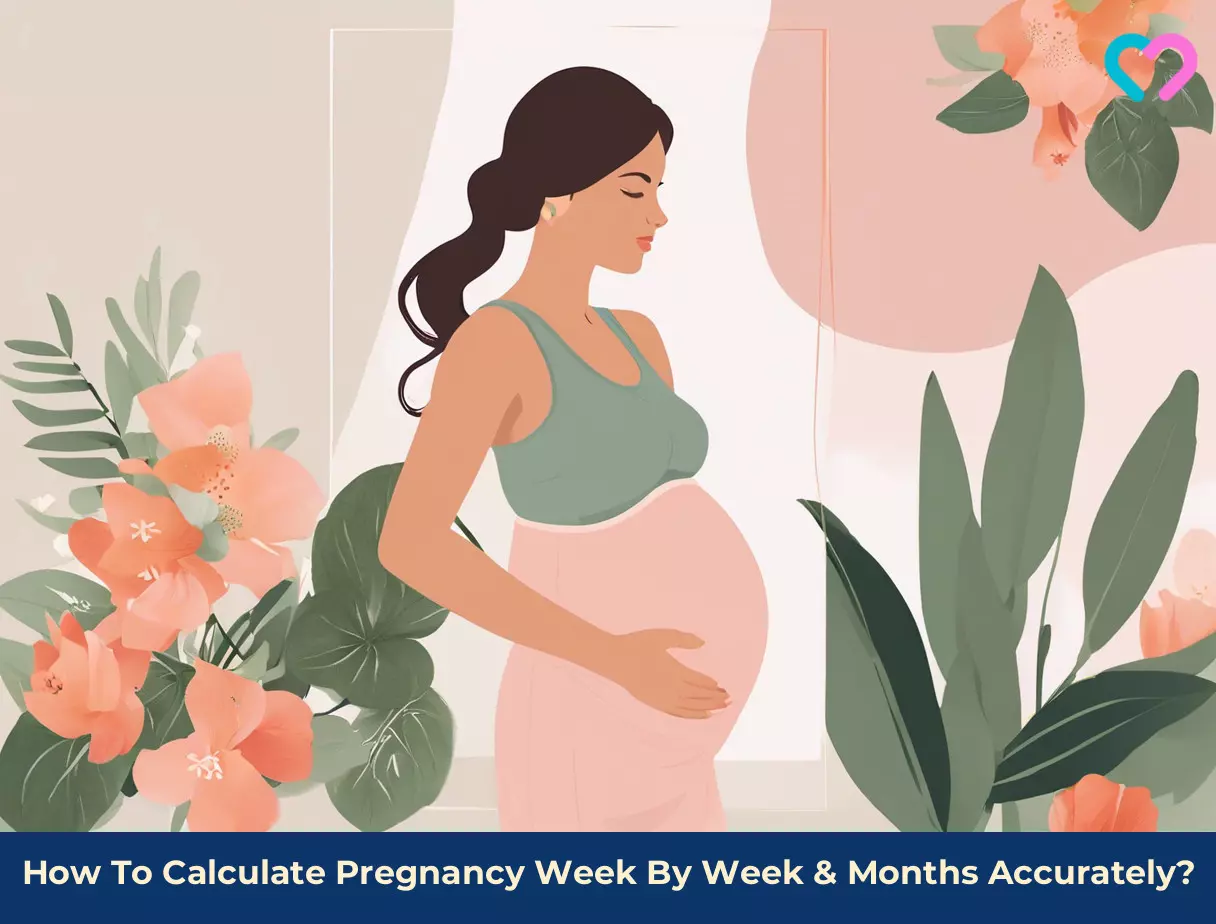
Image: Stable Diffusion/MomJunction Design Team
Personal Experience: Source
MomJunction articles include first-hand experiences to provide you with better insights through real-life narratives. Here are the sources of personal accounts referenced in this article.
i. Was James really 22 weeks 6 days?https://22w6d.com/2014/12/16/was-james-really-22-weeks-6-days/
References
- Calculating a Due Date.
https://www.hopkinsmedicine.org/health/wellness-and-prevention/calculating-a-due-date - Allen J Wilcox et.al; (2000); The timing of the “fertile window” in the menstrual cycle: day specific estimates from a prospective study.
https://pmc.ncbi.nlm.nih.gov/articles/PMC27529/ - S Rowlands and P Royston; (1993); Estimated date of delivery from last menstrual period and ultrasound scan: which is more accurate?
https://pmc.ncbi.nlm.nih.gov/articles/PMC1372555/ - Due Date Calculator.
https://my.clevelandclinic.org/health/diagnostics/22052-due-date-calculator - Birth: Learn More – When your baby’s due date has passed.
https://www.ncbi.nlm.nih.gov/books/NBK279571/ - Estimating Gestational Age.
https://oacapps.med.jhmi.edu/OBGYN-101/Text/Pregnancy/estimating_gestational_age.htm - Methods for Estimating the Due Date.
https://www.acog.org/clinical/clinical-guidance/committee-opinion/articles/2017/05/methods-for-estimating-the-due-date - Amita A Mahendru et.al; (2016); Gestational length assignment based on last menstrual period first trimester crown-rump length ovulation and implantation timing.
https://pmc.ncbi.nlm.nih.gov/articles/PMC5018029/ - Pregnancy Dating.
https://www.ncbi.nlm.nih.gov/books/NBK442018/ - Antenatal Care Module: 10. Estimating Gestational Age from Fundal Height Measurement.
https://www.open.edu/openlearncreate/mod/oucontent/view.php?id=40&printable=1 - Ganesa Wegienka and Donna Day Baird; (2005); A comparison of recalled date of last menstrual period with prospectively recorded dates.
https://pubmed.ncbi.nlm.nih.gov/15857271/ - Multiple Pregnancy: The Management of Twin and Triplet Pregnancies in the Antenatal Period.
https://www.ncbi.nlm.nih.gov/books/NBK83104/ - Estimated Date of Delivery.
https://www.ncbi.nlm.nih.gov/books/NBK536986/ - Everything you need to know about the third trimester (weeks 29 to 40).
https://www.tommys.org/pregnancy-information/im-pregnant/pregnancy-calendar/third-trimester-weeks-29-40 - AM Jukic et.al; (2013); Length of human pregnancy and contributors to its natural variation.
https://pmc.ncbi.nlm.nih.gov/articles/PMC3777570/ - U B Wennerholm et.al; (1998); Gestational age in pregnancies after in vitro fertilization: comparison between ultrasound measurement and actual age.
https://pubmed.ncbi.nlm.nih.gov/9793188/
Community Experiences
Join the conversation and become a part of our nurturing community! Share your stories, experiences, and insights to connect with fellow parents.
Read full bio of Dr. Anita Gondy
Read full bio of Rebecca Malachi
Read full bio of Swati Patwal
Read full bio of Aneesha Amonz

